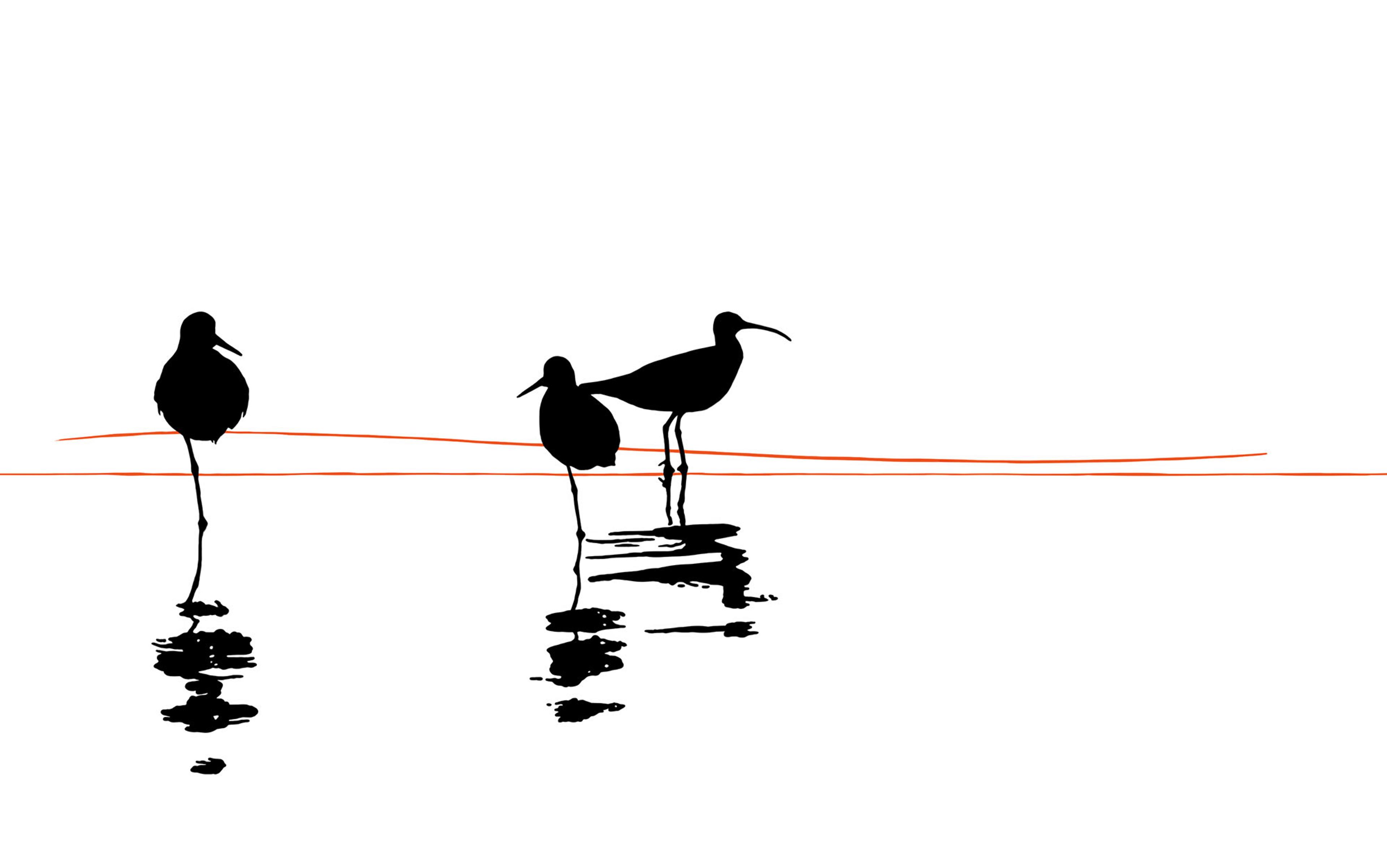Self-deception seems inescapably paradoxical. For the self to be both the subject and the object of deceit, one and the same individual must devise the deceptive strategy by which they are hoodwinked. This seems impossible. For a trick to work effectively as a trick, one cannot know how it works. Equally, it is hard to see how someone can believe and disbelieve the same proposition. Holding p and not-p together is, straightforwardly, to contradict oneself.
Despite its seemingly paradoxical qualities, many people claim to know first-hand what it is to be self-deceived. In fact, philosophers joke that only prolific self-deceivers would deny that they experience it. Nevertheless, there are skeptics who argue that self-deception is a conceptual impossibility so there can be no genuine cases, just as there can be no square-circles.
Yet self-deception seems undeniable in spite of its alleged incoherence. For the fact is, we are not always entirely rational. Certain situations, such as falling in love or being in the frenzied grips of grief, heighten susceptibility to self-deception. Betrayed lovers everywhere, anxious to discard the damning evidence of infidelity, know precisely Shakespeare’s meaning at sonnet 138:
When my love swears that she is made of truth,
I do believe her, though I know she lies
Self-deception is so curious a thing that it is a source of intrigue in the arts and sciences alike. Biologists such as Robert Trivers, for example, have begun to investigate self-deception’s evolutionary origins, probing its function and potential value.
On the one hand, evidence suggests that specific instances of self-deception can enhance wellbeing and even prolong life. For example, multiple studies have found that optimistic individuals have better survival rates when diagnosed with cancer and other chronic illnesses, whereas ‘realistic acceptance’ of one’s prognosis has been linked to decreased life expectancy. On the other hand, self-deception seems like the ultimate delusion. Simultaneous belief and disbelief in a proposition is surely symptomatic of irrationality, placing one’s mental health and capacity for reason in jeopardy.
Existing debates face the challenge of connecting the philosophical and the practical aspects of the problem. Either self-deception is ruled out as incoherent, or it is accepted as a brute fact. If the former, the skeptic must justify the countless cases where it appears to occur. If the latter, some serious revisions to our conception of self are required.
Ideally, we should seek a single solution to both dimensions of the problem so that our explanation of self-deception also points the way to its prevention. For, while deceiving ourselves might occasionally seem to our advantage, in the long term it is self-alienating. And as we shall see, Buddhist approaches to self-deception achieve the synthesis of practical and philosophical resolutions more fully than do the dominant Western theories.
Self-deception belongs to a family of concepts involving psychological manipulation, such as wishful thinking, repression, denial and dissociation (emotionally removing oneself from a traumatic experience to avoid confronting it). Skeptics about self-deception struggle with all these concepts because they normally think of the self as internally unified and self-aware, making concealment of unwelcome self-knowledge impossible.
However, this contradicts psychoanalytic theories on the conscious and unconscious mind. It also goes against experience. We don’t always know ourselves as well as we think, and sometimes we convince ourselves of that which is evidently false or overwhelmingly improbable. The fine line between ambition and self-deception is often manifest around New Year, when many of us are forced to concede that our goals have crumbled from the heady heights of self-improvement plans into delusional wishful thinking.
If self-deception is paradoxical, the experience itself is even more perplexing. Unlike the immediacy of other experiences, how it feels to be self-deceived is knowable only retrospectively, after the spell has been broken.
Take Oedipus. Anxious that the prophecy of patricide and incest will be fulfilled, he leaves his home and family. Though he is genuinely shocked and sickened at the discovery of his true identity, there are indicators throughout the play to suggest his wilful ignorance. Given his fear of patricide, why does Oedipus continue blithely on his way after killing a man? Given his fear of committing incest, why does he marry a widow without first piecing the puzzle together? Such neglect leads the audience to suspect that, somehow, Oedipus was dimly aware of his identity before its full disclosure, and that he either repressed this awareness or deceived himself to avoid the painful truth.
Thankfully, for most of us, our small acts of repression, denial and self-deception are more mundane. For instance, data gathered through self-reporting on consumption often delivers distorted results, reflecting the respondents’ preferred self-image rather than any objective facts. It would be foolish to read self-deception into every omitted glass of wine or unrecorded biscuit – embarrassment and forgetfulness are equally plausible explanations. Even if self-deception is the root cause, this behaviour seems fairly harmless.
Strategies of postponement and misrepresentation allow us to conceal our true nature even from ourselves
Somewhere on the scale between extremely damaging and totally insignificant self-deception we find examples that resonate. If ancient wisdom traditions are right and the quest for self-knowledge is a fundamental part of human flourishing – as in the Socratic maxim ‘know thyself’ – then self-deception undermines the central aims of the good life. Convincing ourselves of what is manifestly false or impossible is both existentially crippling and socially harmful. This propensity is sometimes referred to as the mal du siècle: a general malaise triggered by unsettling awareness of our potential and identity.
In Being and Nothingness (1943), Jean-Paul Sartre invokes the concept of mauvaise foi, or bad faith, to explicate self-deception. He argues that many people are afraid to confront themselves, preferring to follow prescribed norms and fulfil pre-assigned roles rather than to strive for self-realisation. He illustrates bad faith with a few examples: a woman’s hesitant reaction to a man’s advances, a waiter’s self-identification as ‘nothing more’ than a waiter, a homosexual’s unwillingness to acknowledge his sexuality. These strategies of postponement and misrepresentation allow the person to conceal their true nature even from themselves. Sartre deplores this mode of life, for, while such strategies might serve as effective coping mechanisms in the short term, in the long run they are existentially paralysing.
This kind of self-deception, the sort backed up by conformity to norms or stereotypes, is extremely difficult to detect. And, naturally, the most pervasive forms of self-deceit are the hardest to root out. This is especially clear in cases of discrepancy between what a person professes, and how they feel or behave.
Of course, the presence of a bias does not automatically imply self-deception. People can discriminate unknowingly, even against their will, and there is a world of difference between ignorance, and wilful ignorance of one’s own biases and prejudices. As the US civil rights advocate Jesse Jackson put it in 1993: ‘There is nothing more painful to me at this stage in my life than to walk down the street and hear footsteps … then look around and see somebody white and feel relieved.’ Still, discrepancy between belief and behaviour can sometimes signal self-deception, as can the language we use.
It is a mistake to treat the philosophical and the practical aspects of the problem of self-deception as entirely distinct. For what use is an explanation of this phenomenon unaccompanied by a strategy for its alleviation? Prominent Western theories on self-deception tend to leave the practical problem unresolved. But there is an alternative, Buddhist approach. The artful combination of three Buddhist theories provides a philosophically therapeutic perspective on self-deception. Before turning to this response, however, let’s delve deeper into the concept of self on which the paradox depends.
Skeptics about self-deception claim that any genuine examples would need to satisfy impossible conditions, such as the knowing-dupe or the contradictory belief conditions. They claim that satisfying the first condition means being duped by one’s own duplicitous scheme while satisfying the second is tantamount to abandoning reason. Such skepticism represents the minority view, since so many examples of this supposedly impossible phenomenon are clear. Yet it remains a theoretical option.
For the skeptic’s defeat we must show either: (1) that the fact of somebody holding inconsistent beliefs is reconcilable with the idea of a unified centre of conscious beliefs; or (2) that the skeptic misconstrues the conditions under which self-deception occurs. Arguably, the skeptic’s account of self-deception reduces the complexities of human psychology to what is possible at one single moment in time, under the assumption that no sane, cognitively competent person simultaneously believes p and not-p.
But if this is an argument against self-deception, it is time to revise our model of selfhood. Indeed, far from precluding the possibility of self-deception, the multifaceted nature of consciousness might actually help to explain it.
Western philosophy has produced several responses to the paradox of self-deception, the most recurrent of which are the temporal partitioning and the psychological partitioning approaches. Both challenge the (still dominant) conception of the self as completely internally unified and fully self-aware. They are designed to show that self-deception is paradoxical only if the Cartesian model of the self as a non-composite, immaterial substance – whose purity we imagine we partake of – is accepted. Without this idea of the self, self-deception is a puzzle, but it is not a paradox.
Deceiving oneself is just a more unusual case of lying
Some leading philosophers in consciousness studies and the nature of mind reject the Cartesian concept of self. Aside from the lack of empirical evidence for such a self, it would surely be too abstract and impersonal to bear a connection with the individual of lived experience, who engages and interacts in the temporal world. But the influence of the Cartesian model has historically been so significant that it continues to shape the debate. Although both temporal partitioning and psychological partitioning proposals challenge this model of the self, they do not resolve the practical problem of eliminating self-deception.
Advocates of temporal partitioning might invoke the appointment case to explain how self-deception works. The philosopher Brian McLaughlin at Rutgers University in New Jersey summarises it as follows:
In order to miss an unpleasant meeting three months ahead, Mary deliberately writes the wrong date for the meeting in her appointment book, a date later than the actual date of the meeting. She does this so that three months later when she consults the book, she will come mistakenly to believe the meeting is on that date and, as a result, miss the meeting.
This is supposed to show that self-deception does not require simultaneous belief in p and not-p. Instead, all that is required is an intention to induce the belief not-p at the time of believing p. In this case, there is no time when Mary believes both that her appointment is on Thursday and that it is on Friday. Rather, she relies on her faulty memory so that, when she eventually consults her diary, she will have forgotten her act of deception.
We can contest the likelihood of Mary’s forgetting. Indeed, if the prospective appointment (let’s say, with the dentist) elicits such a reaction, she will surely struggle to put it out of her mind. What matters though is that temporal partitioning challenges the idea that the act of deception and the experience of deceit must coincide. Deceiving oneself therefore largely resembles deceiving somebody else, and is just a more unusual case of lying.
For the skeptic, this account won’t cut it. The obvious objection is that temporal partitioning seems not so much to explain self-deception as to explain it away. After all, if after three months Mary has forgotten the true date of her appointment, doesn’t this show that the Mary who deceived is, in some sense, a different person from the Mary who is deceived? If we distinguish cases of self-deception from cases of self-induced deception, we might protest that the appointment case is an example only of the latter. And even if we are satisfied that temporal partitioning explains how self-deception occurs, it cannot tell us how to overcome it.
Another common explanation of self-deception appeals to psychological partitioning between the different facets of the self. On this view, self-deception does involve simultaneous assent to p and not-p but this is not paradoxical because of the multifaceted nature of the self. Rather than treat the self as fully integrated, we should see it as a process, the product of a complex structure composed of various elements. One part of the self can conceal its beliefs from another part, making self-deception possible.
It is only in moments of introspection that the illusion of a unified self is cast into doubt. An advantage of this theory is that it accommodates different levels of self-awareness within one individual, explaining discrepancies between the conscious and unconscious mind.
The philosopher Amélie Oksenberg Rorty at Harvard Medical School illustrates how this might work with the example of Dr Laetitia Androvna:
A specialist in the diagnosis of cancer, whose fascination for the obscure does not usually blind her to the obvious, she has begun to misdescribe and ignore symptoms that the most junior premedical student would recognise as the unmistakable symptoms of the late stages of a currently incurable form of cancer.
Androvna deflects the questions of her concerned colleagues away from her condition, though she does put her affairs in order (eg, by making a will). The mismatch between her behaviour and her consciously held beliefs suggests that, at some level, she recognises her illness but is finding ways to keep her conflicting acknowledgements apart.
Again, the skeptic argues that psychological partitioning is incompatible with genuine instances of self-deception because this approach likewise undermines the identity of deceiver and deceived. From this perspective, if the self is divisible then, to be sure, one part might deceive another, but is this self-deception? If we challenge the unity of the self, must we also challenge the idea of self-deception?
According to Buddhism, the answer is no.
Early Buddhists did not explicitly discuss the problem of self-deception, at least not as it’s understood in Western philosophy. What they did do, however, was provide detailed accounts of three theories that, collectively, provide a response to both the philosophical and practical aspects of the problem. These are (1) the theory of no-self (anātman); (2) the theory of wilful ignorance (avidyā); and (3) the theory of two truths (satyadvaya).
These teachings are variously interpreted within Buddhism, but all schools agree that they can provide transformative insights into our own nature, banishing our tendency for self-deception. While we’re inclined to treat self-deception as the exception rather than the rule, Buddhists see it as our default position. They claim that most people repress and deny uncomfortable truths, deceiving themselves on an almost unimaginable scale about all manner of things. From the Buddhist point of view, the skeptic’s only success lies in the extent of their self-deceit: by defining the self in ways that make it impervious to change, they also strip it of potential.
Specifically, Buddhists claim that we routinely convince ourselves that what is perishable and impermanent can be a lasting source of satisfaction. This illusion only reinforces our existential situation, which is one of profound suffering. From this perspective, even when false beliefs offer temporary relief from painful truths, self-deception merely prolongs the inevitable. Since none of us can stave off our demise forever, each of us is eventually forced to confront the reality of our own transience.
The remedy to all this is a fearless acceptance of our own impermanence and insubstantiality. By abandoning our self-image as fixed centres of agency, Buddhists argue that we eliminate the stultifying effects of greed and hatred borne from egoism. This process eventually leads to liberation through self-awareness, consisting of awareness of the fundamental lack of any self at all.
No-self (anātman) is Buddhism’s most famous, but also most frequently misunderstood, theory. Buddhists supply several arguments against the existence of an eternal, changeless, transcendental and metaphysical self. To understand these arguments, we must contextualise them against the backdrop of the Vedic view of the self, dominant in classical India. In the Vedic worldview, the innermost kernel of a person, the ātman, corresponds to the fundamental source and ground of reality, the Brahman, which is essentially unchanging.
Buddhists reject this on two fronts. First, if the self existed in this way, it could not engage in worldly experience but would instead stand inertly outside of time and space. It would thus bear no relation to the human person who lives and changes through time. Moreover, since experience confirms that everything is causally conditioned, hence subject to change and degradation, an immutable self could never be empirically observed. Second, Buddhists argue that obsession with a fixed self is morally problematic, and that this belief perpetuates selfishness. Belief in the self is therefore seen as both the symptom and the cause of deluded attachment.
The human person is a process, not a thing
Ironically, then, Buddhists are inclined to see belief in a single substantial self as the severest, most dangerous instance of self-deception. This immediately raises the question: if there is no-self, who can be the subject of self-deceit? To answer, we must invoke the theory of two truths (satyadvaya), which stipulates a distinction between ultimate and conventional truth.
In his study of self-deception in different traditions, the philosopher Eliot Deutsch of the University of Hawaii demonstrates one of the ways in which the no-self theory is often misconstrued. He argues that Buddhists can ‘have little to say’ about self-deception because they do not accept the ultimate reality of the metaphysical self. If this disqualifies Buddhists from debates on self-deception, it must also disqualify many Western philosophers who do not approach the paradox of self-deception with a unitary self in mind (including advocates of temporal and psychological partitioning).
On the contrary, although Buddhists reject the ultimate existence of the self, they accept the conventional (we might say, practical or functional) reality of conceptually constructed persons. And crucially, as we have seen, it is the conventional person – not an ultimate self – who expresses the full range of human emotions and deploys the tactics of self-manipulation, including self-deception.
Buddhists conceive of conventional reality in terms of conceptualisation. Hence, the concept of a person reflects nothing more than the imposition of this idea on to ephemeral elements of which we are composed, called the skandhas. The skandhas include: the physical body, sensory experiences, cognitive awareness of perceptions, intentional acts of will and consciousness. None of these remain stable over time but there is a causal connection between the past, present and future skandhas. This is sufficient for personal identity even though there is no such thing as a numerically identical self.
In other words, the human person is a process, not a thing. Our language typically fails to communicate this fact, and my repeated use of the word ‘I’ sustains the illusion of the self as an underlying, constant feature of reality.
To explain how self-deception occurs, Buddhists can distinguish ultimate from conventional truth. Like the temporal and psychological partitioning approaches, epistemic partitioning challenges the identity of deceiver and deceived. At the level of ultimate truth, there simply is no-self who could be self-deceived. At the level of conventional truth, we encounter the person (who is an illusion, better thought of as a sequence of person-stages). Unlike temporal and psychological partitioning, however, epistemic partitioning goes a step further. It not only explains the mechanism of self-deception but also contains the seeds of its elimination.
The Buddha’s teachings are renowned for their therapeutic orientation, and self-deception seems the antithesis of an authentic life of human flourishing. Buddhism stresses the link between discerning truth (with ‘right view’ as the first step on the noble eightfold path) and moral fulfilment. The distinction between ultimate and conventional truth not only explains the origins of our illusions but helps us to overcome, or see through, their deceptive character.
The final goal of this process is the complete alleviation of suffering, including the suffering borne out of self-deception. Epistemic partitioning of ultimate and conventional knowledge results in two modes of knowing, which we might call the cognitive/intellectual and the affective/practical. We might know ultimately that everything is impermanent and insubstantial yet remain attached to merely conventional things. Ourselves, for instance.
We display wilful ignorance of perishability as we cannot bear to lose the things we hold most dear
Once we internalise this truth, however, Buddhists suppose that delusional compulsions for transient things will be gradually undermined. Just as there is no ultimately real self, neither are there any ultimately real tables, chairs and so forth. The identity we assign to composite things made up of parts is just the product of mental construction, reflecting our ingrained tendency to impose structure, stability and substance.
Though we know that things change and degrade, we act as though they are permanent. Such a discrepancy between conscious cognitive belief and innate affective attitude signals self-deceit. Put simply, we display wilful ignorance (avidyā) of perishability because we cannot bear to lose the things we hold most dear.
Why, then, do Buddhists treat conventional truths as truths at all? Indeed, if they are nothing but convenient fictions, isn’t this a distortion of truth’s meaning? Again, Buddhists see the therapeutic dimension of their philosophy as justifying this manoeuvre: belief in the self would be both inaccurate and unhelpful, whereas belief in the person is key to accomplishing the goals of Buddhism. Mindfulness forces us first to confront the wide chasm between our self-image and the ultimate truth of our nature; and second, helps us to bridge that chasm by becoming increasingly aware of the workings of the mind and its deceptive strategies so that we no longer repress and deny our true feelings.
It might strike the modern reader as patently wrongheaded to suggest that any religious tradition contains the seeds of a solution more satisfying than secular proposals. For, understandably, many see religious belief as coterminous with wishful thinking and incompatible with reason. However, the Buddhist response sketched here depends exclusively on arguments about human nature that are equally open to dispute and defence. There is no recourse to mystical or non-empirical claims. And because the problem of self-deception is more personal than many of philosophy’s other problems, viable solutions must work both in theory and in practice. Though the many forms of self-deception make the effectiveness of a universally applicable remedy unlikely, Buddhists would concur with Macbeth’s doctor that ‘Therein the patient must minister to himself.’






